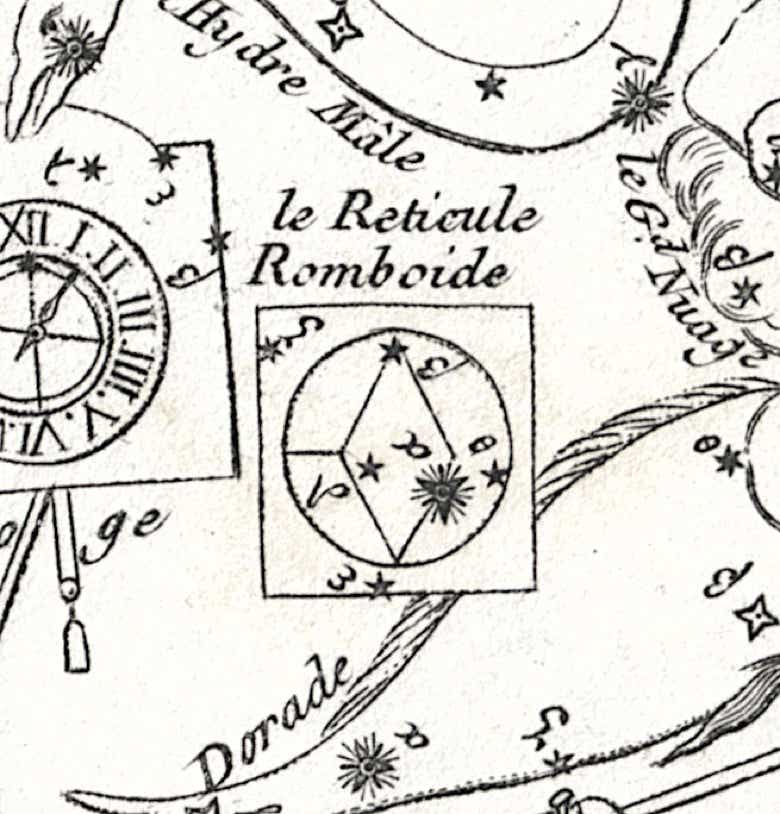Lacaille’s Reticulum
Lacaille first published the constellation Reticulum in 1756 on his planisphere of the southern stars and its accompanying catalogue, although there was some inconsistency between the two in its naming. On the chart it was given as le Reticule Romboide, as on the illustration below, while in the remarks following the catalogue he called it le Réticule rhomboïde, with the addition of a letter ‘h’ and some accents. The name was Latinized to just Reticulus (sic) on the second edition of the chart in 1763 which accompanied his final catalogue, Coelum Australe Stelliferum.
The constellation commemorated the diamond-shaped aperture known as a reticle in his telescope’s eyepiece which he used for measuring the meridian transits of stars as they drifted through the field of view. The average of the times of entering and leaving the rhombus gave the time of meridian crossing. Lacaille showed a diagram of the actual device in the introduction to his Coelum Australe Stelliferum. The sector to the upper left of the rhombus was solid to help him judge whether the star had passed through the upper or lower part of the reticle, from which its declination could be calculated. If the star passed above centre it would be blocked by the solid sector after crossing the edge of the rhombus and would not reappear, whereas if it passed below centre it would reappear.

The illustration above comes from a copy of Lacaille’s map published in the Atlas Céleste of Jean-Baptiste Fortin. On this map the name ‘romboide’ was spelled without an ‘h’, as in Lacaille’s original. It is placed next to his observatory clock, l’Horloge (now known as Horologium), here seen at left. On his version of the chart, Fortin added Greek letters to the stars but kept the names of the constellations in French, as Lacaille had done on his original.
(Image: Author’s collection)
© Ian Ridpath. All rights reserved